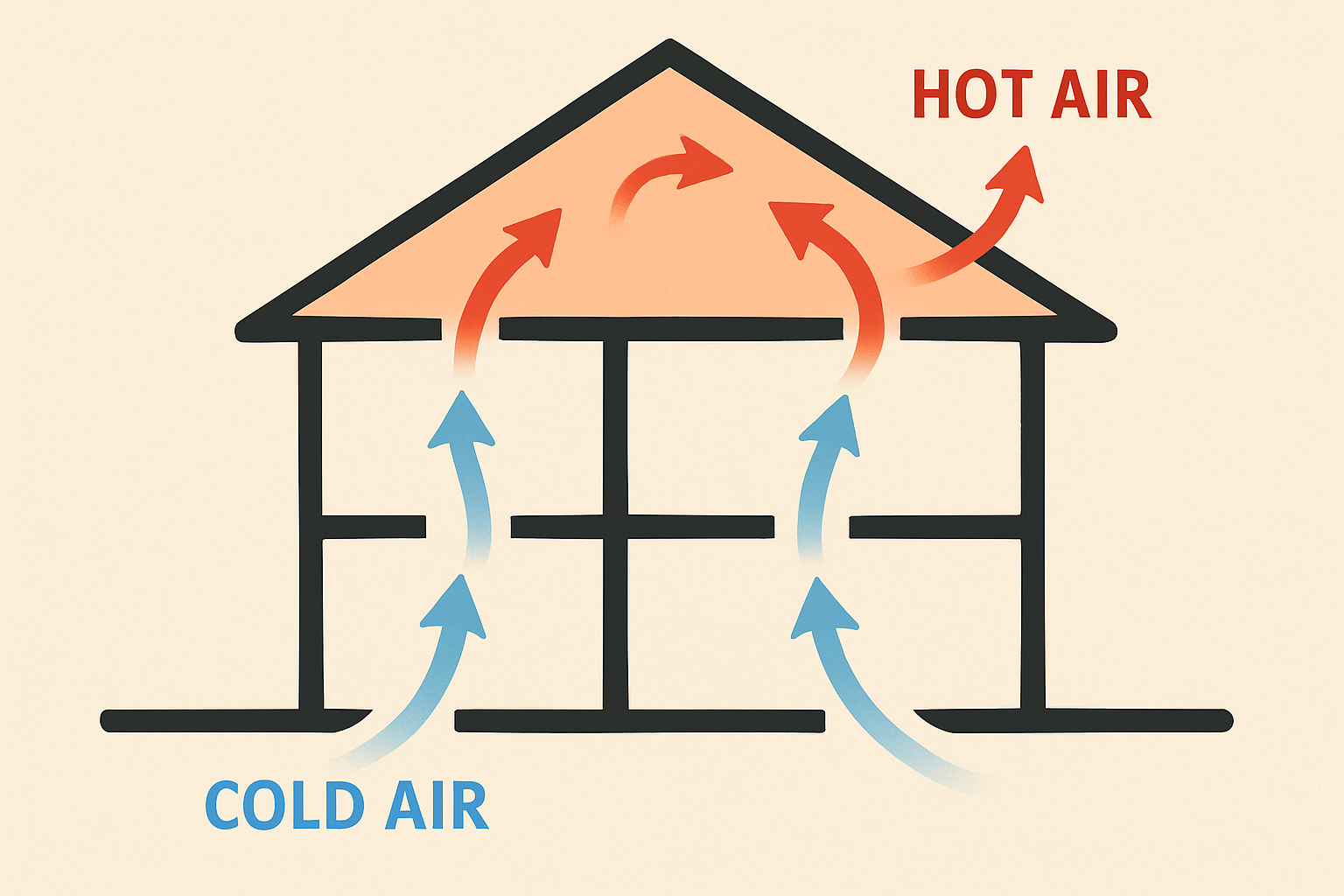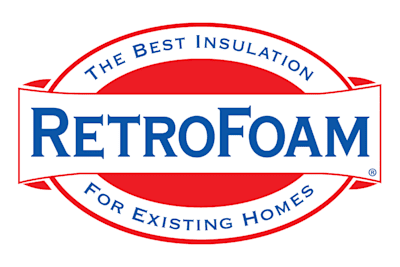What is Stack Effect, and How Can Air Seal Insulation Stop It?


Have you ever noticed how your home feels drafty in the winter but stuffy in the summer?
It’s not just your imagination; it’s probably stack effect at play. Also known as the chimney effect, this invisible force can quietly wreak havoc on your home’s comfort, energy bills, and even your indoor air quality.
In this article, we’re breaking down what stack effect is, why it’s a problem in houses, and how air seal insulation, like foam, can help you stop it in its tracks.
What is Stack Effect?
Stack effect, or the chimney effect, refers to the movement of air into and out of a building due to temperature and pressure differences between the indoor and outdoor environments.
Here’s how it works:
- In winter, cold air enters the home at the lowest levels through the crawl space or basement. That heavy cold air pushes warm air up and out through your attic and roof.
- In summer, the process reverses. Hot air seeps in through the attic, pushing cooler indoor air down and out through the lower parts of your home.
Whether it’s cold or hot outside, the stack effect in a house creates a constant tug-of-war between your indoor air and the outdoor elements.
Why Stack Effect is a Problem in Homes
At first glance, stack effect might sound like just another quirk of how buildings breathe.
But for homeowners, it comes with a few major issues.
Higher Energy Bills
Your HVAC system is working overtime trying to maintain your desired indoor temperature.
The more air you lose to stack effect, the harder your system has to work to keep up.
Uncomfortable Living Spaces
Drafty winters and muggy summers aren’t just inconvenient; they can make rooms feel unevenly heated or cooled.
No matter how high you crank the thermostat, it’s impossible to maintain a constant, comfortable temperature.
Poor Indoor Air Quality
Stack effect brings in outdoor air, which means you’re also inviting in allergens, pollutants, dust, and humidity.
This is especially problematic for those with asthma or allergies.
Why Traditional Insulation Isn't Enough
Materials like fiberglass and cellulose are designed to slow down air movement, not stop it.
Here’s where they fall short:
- They don’t create an air seal, which means air can still sneak in and out.
- They can hold onto allergens, contributing to poor indoor air quality.
- They settle and shift over time, especially when exposed to constant air movement, leaving gaps in your insulation coverage.
These gaps only add fuel to the fire when it comes to stack effect in buildings.
How to Stop Stack Effect with Air Seal Insulation
The key to stopping stack effect is stopping the air movement, and that means air sealing the entire building envelope.
Spray Foam and Injection Foam: The Dynamic Duo
- Spray foam insulation in the attic and crawl space or basement seals off the top and bottom of the home.
- Injection foam insulation, like RetroFoam, seals the walls without removing drywall.
Together, these create a continuous air barrier that prevents outside air from sneaking in and conditioned air from leaking out.
Important Note: Only sealing part of the building envelope can actually make stack effect worse. For example, sealing the walls but not the attic or crawl space may build up air pressure, forcing more air out through any remaining weak spots.
Stack Effect in a House: Are You Winning or Losing the Battle?
If your home isn’t fully air-sealed, chances are you’re on the losing side of the stack effect battle.
But the good news? It’s totally fixable.
Foam insulation provides a long-term solution to mitigate the stack effect, enhance comfort, and improve energy efficiency year-round.
Ready to Stop Stack Effect in Its Tracks?
If you’re curious whether stack effect is affecting your home, chances are it is.
But you don’t have to live with it.
Find a RetroFoam dealer near you and take the first step toward a quieter, more comfortable, and energy-efficient home.
Or, if you’re the kind of person who likes to know all the things before you sign, head over to our Learning Center to explore even more building science tips and insulation know-how.
Key Points:
- Stack effect, also called the chimney effect, is the movement of air through your home caused by temperature differences.
- It leads to energy loss, uncomfortable rooms, and poor indoor air quality.
- Traditional insulation only slows air movement – it doesn’t stop it.
- Air seal insulation, like spray foam and injection foam, stops stack effect by sealing the building envelope.
- Sealing only part of your home can make the problem worse. A complete air seal is the solution.
Related Articles
What is Air Sealing Your Home with RetroFoam Insulation?
What Causes an Uncomfortable Home?
About Amanda Emery
Amanda previously has worked as a breaking news and crime reporter, TV news producer, and editor. As a journalist, she has won several awards from The Society of Professional Journalists - Detroit Chapter and the Michigan Press Association. Amanda uses her experience as a journalist to write content that will help educate homeowners on foam insulation benefits. When Amanda isn’t writing, she’s spending time with her husband Chris, daughter Lilith-Maeve, and rescued huskies Danger and Wendigo. She also loves knitting, making art, and cooking.


